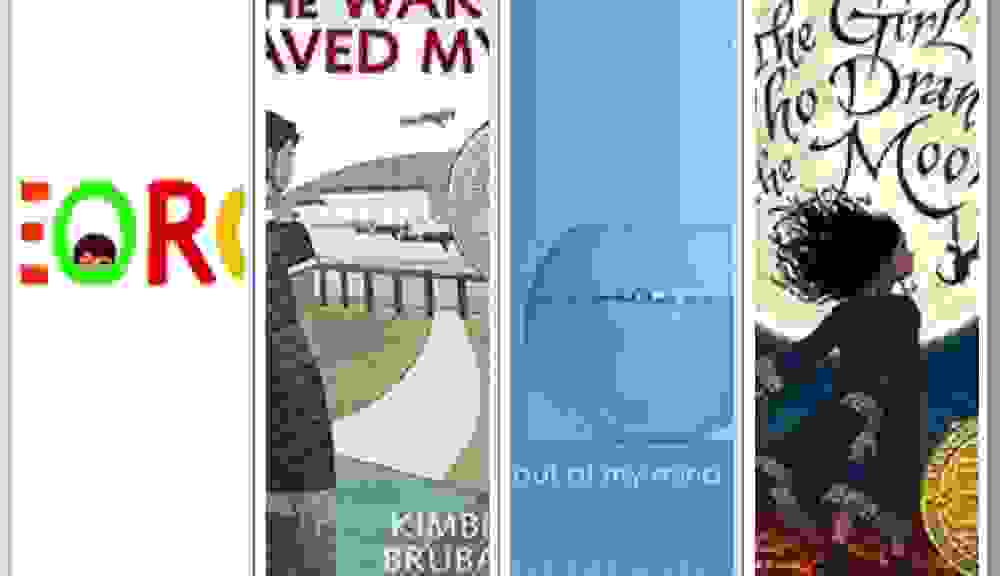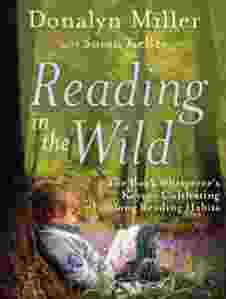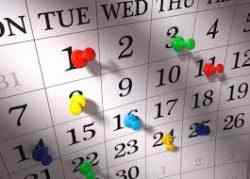
Week 7: Online Work Plan
Week 7 Online Work Plan: Chapter Books, Reading in the Wild, Book Buddies, Reviews, and Makes, Oh My!
Okay nice people, read below carefully. Lots of moving parts to keep track of next week.
In a nutshell (longer descriptions and prompts below):
- By Tuesday, Oct 3: Respond to two prompts in our G+ community. One prompt about your chapter book and one prompt about Miller chapter 3.
- By Thursday, Oct 5: Read your 8th grade book and respond to your book buddy on our Padlet.
- By Friday, Oct 6: write a review of your chapter book on Goodreads.
- By Sunday, Oct 8: Make 2 due in G+ community about chapter book
- Bloggers (Megan, Sean, Jamie L., Morgan, Tanpreet, Jodi S, Shannon): featured blog due to Kim by Tuesday night, Oct 10. Share in google doc: kjaxon@mail.csuchico.edu
By Tuesday night (10/3):
Prompt 1: Do a close analysis of one of the characters from your chapter book:
- What are his/her physical characteristics?
- How does he/she interact with other characters?
- How does he/she interact with the world around him/her?
- What are this character’s behavioral traits?
- Choose a sentence or two that is significant for this character. What do we learn about this character from the passage you’ve selected? What do we know about children/childhood from this character?
Prompt 2: Read Donalyn Miller’s chapter 3 and respond:
- What are take aways for you from Miller’s third chapter? Point to specific places in the chapter that you find interesting, puzzling, eye opening. Then, consider: How close are you to being the kind of elementary teacher who can recommend so many different kinds of books? How will you grow no matter where you’re starting from? What advice does she offer in this chapter or previous chapters that you would consider trying out now?
I would expect you to write 2-3 meaty paragraphs in response to chapter 3. Post in our G+ Community under the category Make Cycle 3: Respond to prompts Chapter book and Miller 3.
Here are some examples of these prompts from my online class you may find useful as models:
From Casey (character analysis):
The chapter book I am reading is The Girl Who Drank the Moon. The character I am analyzing is the enmagicked Luna. Luna is a character who we get to follow from infancy. I am only about half way finished the book and she just turned 12 so the story follows over several years of time. Luna is a young girl with pretty black curly hair, and black eyes that sparkle like the stars. From infancy to when she was 5, she seemed to be a little wild child who seemed to purposely be disobedient because she could not be tamed. She is blissfully unaware of the havoc she creates and the struggle she causes her family. She is curious and adventurous and loves to experience life.
The following sentence wraps up Luna as she was 5 years old: “She climbed, hid, built, broke, wrote on the walls, and spoiled dresses when they had only just been finished. Her hair ratted, her nose smudged, and she left handprints wherever she went.”
I have just passed some parts where the story is starting to develop her as more than just a wild child. She wants an explanation of why she can’t read certain books and why she draws the best when she doesn’t remember it. She wants to discover why her memories fade away. She wants to know what her dreams mean. She has more relatable emotion as the story goes on.
What I know of her character so far is that it represents the real life process of growing up. It is easy to get lost in this magical fantasy world, but she goes through the stages many of us go through. A fussy baby, a mischievous wild child, and a preteen who needs answers. It also mentions that she and her grandmama lie to each other and that is an interesting part of life that happens around that age as well because they were once so close, but time brought a distance between them.
From Tamara (response to Miller):
“Read. Read anything. Read the things they say are good for you, and the things they claim are junk. You’ll find what you need to find. Just read.” -Neil Gaiman. This quote perfectly sums up one of the main points if this chapter.
Through various avenues, the author talks about how to engage children in reading of all kinds, how to help children make informed decisions on book selections, and keep them engaged and accountable in their readings. All things that are very important when it comes to molding a child into a wild reader. One of the areas I found interesting was when the author explains how important it is for children to choose books for themselves. Sounds simple enough, right? But when it comes to younger children, or even older ones who have yet to dive into the world of reading, making a decent book selection on ones own can be challenging, but it is very important. Choose a book that is too easy and they won’t advance in their abilities. Choose one that is too difficult and they could get frustrated and turn their back on selecting books to read again. Tell them what to read without options and you will stifle their imagination and ability to explore other options out there and make their own reading choices. So many things to consider. This is why I loved the authors “preview stacks” idea and implimentation. On page 71 she says, “I use my expertise as a guide to select several books a particular student might like and offer the child a stack of choices. Students are free to choose any books that interest them or reject them all.” I loved this idea. Especially the fact that it is not a general stack of books that any kid could like, it is tailored to that one particular student that the teacher has come to learn about. She asks questions like, “what genre do you want to read?” “What have you already looked at today?” “What was the last book you finished that you really liked?” and “What sort of book are you thinking about?” These questions help guide the teacher as to what the student is looking for and at the same time, educates the student on how to make an informed book decision. When given the stack of books, not only can this student exercise his/her free will to choose a book, they also learn about HOW to select the book they want to read. This process ensures that as the year progresses, the student will become more knowledgable in their decision making skills when it comes time to select a book. “Empowered and knowledgable, wild readers know they can walk into any library or bookstore and find something to read. Our students must develop this confidence and capacity to become wild readers themselves.” This is the end goal. Knowledgable and empowered wild readers.
After reading this, I know that I have a ways to go (and thankfully a few years until I actually become a credentialed teacher) but I know the direction in which I want to go. I have already started building my library at home, but now I know how to utilize it more efficiently. One thing I need to accomplish is building my repetoir of book knowledge for the upper elementary grades so that I am able to make more informed and knowledgable recommendations when it comes to book choice. Being a (mostly) strict fantasy book fan, I love that this class is taking me out of that area and introducing me to other genres that children (and myself) will like. I absolutely LOVED “The War That Saved My Life,” and have already recommended it to a few of my friends childrens who love reading. And that was considered historical fiction, something I never thought I’d read (not a big history fan at all). Getting out of ones comfort zone, reading-wise, can open up a door to a whole new world and I am excited to be doing so. Starting up the Goodreads account has been fantastic! I stayed up for over an hour browsing reading recommendations and adding to my “want to read” list, and setting a realistic reading goal for the remainder of this year! I know I have room to grow, and I know it will take time, but this class (and English 333) have opened my eyes to a whole different perspective on reading and writing, their connections, and their importance, not just in children, but in me as well.
On a side note, on page 82 of our text, our author gives us the name of an app that she uses to digitalize her library and create a beautiful flow for checkouts/returns/book state, etc. I downloaded it, used my sons school as my home school (though I don’t see how this part matters?), and have it ready to use. I am going to scan in all of my books from my home into it and start my home library (just need to build more bookshelves)! Maybe I’ll even require my children to “check out” a book. We’ll see how that all goes!
By Thursday (10/5) evening (Important! Please don’t leave the 8th graders hanging!):
Read your 8th grade “book buddy” text for at least 30 minutes. Respond to your 8th grade buddy’s post about the book on our Padlet. Ask them questions about the book that they might take up for next week.
 By Friday, Oct 6: Finish chapter book and write chapter book review in our Goodreads Community.
By Friday, Oct 6: Finish chapter book and write chapter book review in our Goodreads Community.
By Sunday, Oct 8: Make 3 (Chapter Book Make)
Again, just like with the series books, you have a lot of choice in how you decide to share your chapter book. The goal: share your book in a creative way with others so that perhaps they too can get excited about reading the book. Another goal: use the make as a way to think about the ideas/themes/characters in the books we are reading. Try out making something that you might ask your future students to make.
You can create a piece of art, a book trailer or short film, write a song, write fanfiction, create a game, create a lesson plan or class activity…lots of possible ways to share. You can upload an image of your artifact, share a link, share a video, etc.
As always, once you create your “make,” you will also write a brief artist’s/writer’s statement explaining what you were attempting to do with this make: how did you approach this artifact? what worked? what did not work out as planned?
Upload/link/paste make and write about your process in our G+ community under the category Make Cycle 3: Chapter Book Makes

